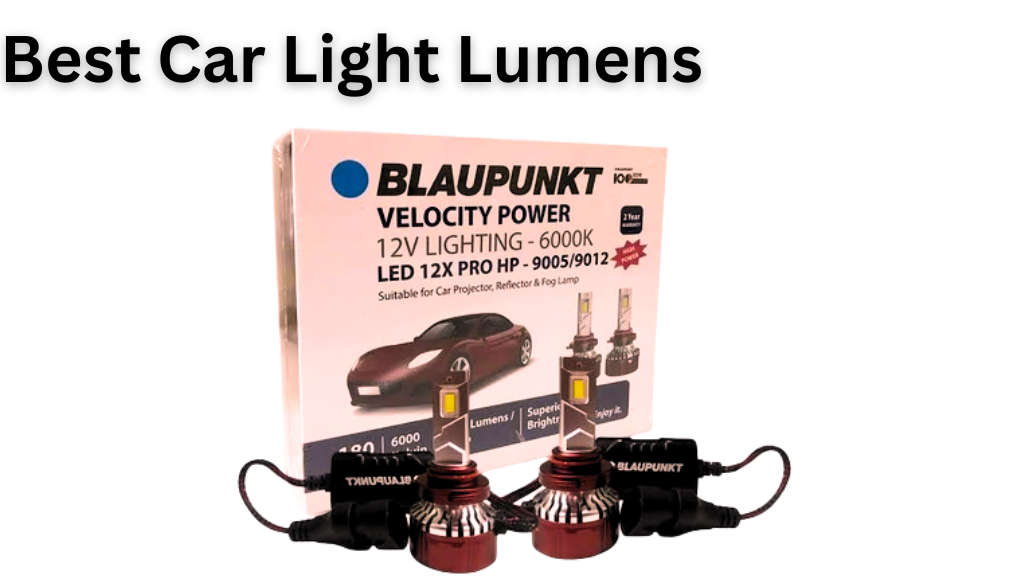Car Light Lumens
Car headlights are essential for ensuring visibility and safety on the road, especially during nighttime drives and harsh weather conditions Car Light Lumens . In today’s automotive lighting market, the term “lumens” has become a key factor in determining a bulb’s brightness.
This article breaks down what lumens mean for car lights, the ideal brightness levels for different light types, and tips on selecting the right lighting for your vehicle.
What Are Car Light Lumens in Car Lights?
Understanding Lumens:
Lumens (lm) refer to the total quantity of visible light emitted by a source. Simply put, the higher the lumens, the brighter the light appears to the human eye.
- Lumens vs. Watts:
- Wattage indicates how much energy the bulb consumes.
- Lumens measure the actual light output.
For vehicle lighting, lumens provide a more accurate measure of brightness than wattage, as two bulbs using the same power may emit different amounts of light depending on the technology (halogen, HID, or LED).
Ideal Lumen Levels for Various Car Light Types
Different lighting components on a car require different brightness levels to perform effectively. Here’s a general recommendation:
| Light Type | Suggested Lumen Range (Per Bulb) |
|---|---|
| Low Beam Headlights | 700 – 1,200 lumens |
| High Beam Headlights | 1,200 – 1,700 lumens |
| Fog Lights | 300 – 800 lumens |
| Daytime Running Lights (DRLs) | 200 – 400 lumens |
| Tail and Brake Lights | 80 – 300 lumens |
| Interior Lighting | 50 – 300 lumens |
| Number Plate Lights | 50 – 100 lumens |
| Reverse Lights | 200 – 500 lumens |
Comparing Halogen, HID, and LED Light Lumens
Halogen Bulbs:
- Widely used in older vehicles.
- Low beam brightness: 700 – 1,000 lumens.
- High beam brightness: 1,200 – 1,400 lumens.
- Produces a warm yellowish light and has a moderate lifespan.
HID (High-Intensity Discharge) Bulbs:
- Found in many premium vehicles.
- Low beam brightness: 1,200 – 1,500 lumens.
- High beam brightness: 1,500 – 1,800 lumens.
- Emits a bright, white light, but requires a ballast to function properly.
LED Bulbs:
- The latest lighting technology in automotive.
- Low beam brightness: 1,200 – 1,600 lumens.
- High beam brightness: 1,600 – 2,000 lumens.
- Energy-efficient, long-lasting, and emits a crisp white light.
What Is the Right Brightness for Car Lights?
Finding the perfect balance between visibility and safety compliance is important when selecting car light brightness.
1. Comply with Legal Limits:
Many countries have regulations for maximum headlight brightness. Typically, the upper limit is around 3,000 lumens per bulb to avoid causing glare to oncoming traffic Car Light Lumens .
2. Adjust Brightness Based on Driving Conditions:
- Urban environments: Lower brightness (700 – 1,200 lumens) is sufficient.
- Highway driving: Higher lumens (up to 1,700) improve long-distance visibility.
3. Prevent Blinding Other Drivers:
Properly aim your headlights and avoid ultra-bright bulbs without projector lenses.
Factors That Influence Car Light Brightness
Several factors can affect the actual brightness of your car lights:
- Bulb Quality: Poor-quality bulbs might not produce the advertised lumen output.
- Headlight Housing: Cloudy or scratched housings reduce light projection.
- Reflector and Lens Design: Affects how the light is distributed.
- Vehicle’s Power Supply: A weak electrical system can lower brightness.
- Weather Conditions: Fog, rain, or dust can absorb or scatter light, reducing visibility.
How to Tell if Your Car Lights Are Too Dim or Too Bright
Signs of Dim Lights:
- Limited visibility during nighttime driving.
- Road signs are difficult to see from a distance.
- Headlights emit a dull, yellowish glow.
Signs of Overly Bright Lights:
- Other drivers frequently flash their lights at you.
- Noticeable glare reflecting off signs or wet roads.
- Failing a roadworthiness test due to excessive brightness.
Safely Upgrading Car Light Lumens
1. Review Vehicle Specifications
Always refer to your owner’s manual for guidance on suitable bulb wattage and types.
2. Choose Reliable Brands
Brands such as Philips, Osram, and Hella offer certified bulbs that meet safety standards like DOT and ECE.
3. Select the Right Bulb Type
- LEDs offer the highest lumen output with energy efficiency.
- HID bulbs provide strong light but need a compatible system.
- Halogen bulbs are cost-effective but less bright.
4. Align Headlights Properly
After installing brighter bulbs, adjust your headlights to prevent dazzling other drivers.
Misconceptions About Car Light Lumens
Myth 1: More Lumens Equal Better Visibility.
Not always. Without proper focusing, excessive lumens can cause glare.
Myth 2: Bright Lights Use More Energy.
LEDs are highly efficient and consume less power even with higher lumen output.
Myth 3: A Higher Kelvin Rating Means Higher Lumens.
Color temperature (Kelvin) describes light color, not brightness.
Lumens and Color Temperature Explained
- Lumens = Brightness
- Kelvin (K) = Color tone of the light.
Example lumen outputs for different color temperatures:
| Color Temperature (K) | Appearance | Typical Lumens |
|---|---|---|
| 3,000K | Warm yellow | 700 – 1,200 |
| 4,300K | Pure white | 1,200 – 1,700 |
| 6,000K | Cool white with blue tint | 1,500 – 2,000 |
| 8,000K | Blue hue | Lower lumens |
Frequently Asked Questions (FAQs) About Car Light Lumens
Q1: What is the maximum legal lumen level for headlights?
Most regions cap headlight brightness at 1,500 – 3,000 lumens per bulb, but local laws may vary.
Q2: Can I switch from halogen to LED without problems?
Yes, but it’s important to ensure the new bulbs are road-legal and properly focused.
Q3: Are brighter fog lights better?
Not always. Fog lights are most effective at lower lumens (300 – 800) and warmer color temperatures (~3,000K) to reduce reflection in fog.
Q4: Do car bulbs lose brightness over time?
Yes. Halogen and HID bulbs dim with age, while LED bulbs have a much longer lifespan and slower brightness decline.
Q5: How can I measure my car’s light output?
Use a lux meter or check manufacturer specifications for approximate lumen values.
Conclusion: The Importance of Correct Car Light Lumens
Choosing the right lumen level for your car lights ensures you can see the road clearly without creating hazardous glare for other drivers. Whether you’re replacing stock bulbs or upgrading to more modern lighting solutions, the right lumens improve both safety and driving comfort.










